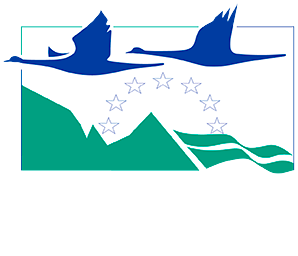Dives
The information you need to convince yourself
We offer our best in and out of the water.
Diving computer included
Dive computer and safety kit are mandatory. That's why we don't charge you for them.
Guide included
Certified instructors will go with you during the dives at no extra cost.
Snack included
Snack, water, tea and coffee awaits you between dives in our centre.
15L tanks & Nitrox
Ponemos a tu disposición botellas de 15L sin coste y Nitrox con suplemento.
Dives in the marine reserve in the north of Menorca.
Llosa d'es patró Pere
One of the most popular dives in the marine reserve. La Llosa never disappoints, both in terms of the route and the number of groupers, octopus and barracuda that we will find. If we are lucky and see them hunting, you won’t want to leave.
Highlights: the amount of life in the area.
- Max. depth: 28m
- Difficulty: medium
- Navigation: 10m
- Biodiversity: high
Illa de Porros Norte
Probably the most abundant and largest dive site in the whole reserve. Huge shoals of barracuda, giant groupers and amberjacks hunting are what we usually see whenever we go there.
Highlights: size and amount of biodiversity.
- Max. depth: 30m
- Difficulty: medium
- Navigation: 15m
- Biodiversity: groupers, barracudas, amberjack, dentex, octopus, nudibranchs
Illa de Porros Sur
Here we will enjoy the best start to the dive in the whole Reserve. Through a large tunnel, we slide into the depths in search of large groupers and shoals of barracudas.
Highlights: large initial tunnel and big groupers.
- Max depth: 25m
- Difficulty: medium
- Navigation: 15m
- Biodiversity: groupers, spiny dogfish, amberjack, amberjack, octopus, moray eels
Illa Tirant
At the foot of the Torre de Fornells, we find one of the busiest areas of the Reserve. A beautiful landscape, a great variety of species, suitable for all levels.
Highlights: cleaning station for numerous species.
- Max depth: 18m
- Difficulty: easy
- Navigation: 5m
- Biodiversity: groupers, octopus, moray eels, nudibranchs, mediterranean lobster, forkbeards
Punta Lajial
The anchorage is the only similarity with its twin dive. Landscape and route, this time deeper, totally different, but no less spectacular.
Highlights: Visiting the barbada at the mouth of Fornells.
- Max depth: 30m
- Difficulty: medium
- Navigation: 5m
- Biodiversity: groupers, octopuses, moray eels, nudibranchs
El Faro
Located under the Cavallería lighthouse, this is one of the jewels of the Reserve. There is no better place to see sea mediterranean lobsters. In addition, we will enjoy a natural labyrinth carved into the rock full of planaria and lobster fry.
Highlights: mediterranean lobsters and rock labyrinth.
- Max depth: 25m
- Difficulty: medium
- Navigation: 10m
- Biodiversity: groupers, octopuses, cicadas, planarians, nudibranchs, lobster pups
S'Olla
Impressive wall where large predators come to hunt. At a certain point, you can zigzag under imposing rocky blocks.
Highlights: size of predators.
- Max. depth: 30m
- Difficulty: high
- Navigation: 10m
- Biodiversity: groupers, dentex, amberjack, greater forkbeards
Islote de Satjatia
A fun and easy dive where you can go through numerous tunnels and visit, if the size of the group allows it, a beautiful cave. It has a large sandy area where lots of rays gather. If you have a good eye, you won’t be short of pipefish.
Highlights: tunnels and small cave.
- Max. depth: 20m
- Difficulty: easy
- Navigation: 10m
- Biodiversity: rays, groupers, octopus, moray eels
Punta d'en Baptiste
The only one of our dives where you can see big lobsters and red coral at an affordable depth. Although it is shorter than the others, due to its depth, it is a totally different dive.
Highlights: lobsters and red coral.
- Max. depth: 33m
- Difficulty: high
- Navigation: 10m
- Biodiversity: lobsters, groupers, octopus
Cap Roig
Area of big predators such as groupers, pollack, dentex and amberjack. There is the possibility of visiting an area populated by white gorgonians.
Highlights: size of predators.
- Max. depth: 30m
- Difficulty: high
- Navigation: 10m
- Biodiversity: groupers, dentex, amberjack, white gorgonians
Dives outsidethe marine reserve.
Punta Pentinat
This dive is located on the cape that gives it its name. You will see saddled seabream ‘raining’ as you go through passages and tunnels. Final surprise inside the Cova de ses bruixes.
Highlights: final cavern.
- Max depth: 25m
- Difficulty: medium
- Navigation: 15m
- Biodiversity: schools of saddled seabream, moray eels, octopuses, planarians and nudibranchs.
En Frare
A dive where you can feel ‘things’ in the cliff where it is located. A succession of caverns, visors and backlights that will not leave you indifferent.
Highlights: succession of backlights.
- Max. depth: 18m
- Difficulty: medium
- Navigation: 10m
- Biodiversity: moray eels, crustaceans, bryozoans, planarians, nudibranchs.
Cueva de los Ingleses
Huge cavern characterised by its great backlighting, with a column worthy of the Acropolis, which divides it in two. Combinable with a small cave adorned with stalactites, if the size of the group allows it.
Highlights: backlight.
- Max. depth: 18m
- Difficulty: easy
- Navigation: 5m
- Biodiversity: moray eels, crustaceans, octopus
Coves d'es Llamp (4 cuevas)
A series of caverns located along a large cliff. Diving through different holes connected to each other, and zigzagging between large boulders, make this dive a real labyrinth.
Highlights: landscape and backlighting.
- Max. depth: 18m
- Difficulty: medium
- Navigation: 5m
- Biodiversity: moray eels, crustaceans, nudibranchs
Punta d'es Morter
Possibly the most beautiful underwater landscape in the Reserve. Enjoy exploring the numerous visibilities, canyons and tunnels. The icing on the cake is a beautiful cavern.
Highlights: Landscape.
- Max. depth: 25m
- Difficulty: easy
- Navigation: 5m
- Biodiversity: octopuses, moray eels, crustaceans, nudibranchs
Es Pinacle
This dive is located practically inside the bay of Fornells. Its proximity does not make it any less attractive. It is characterised by its jagged underwater mountain range and is home to countless octopus and moray eels, as well as being a good fishing area for little tunny.
Highlights: number of octopuses.
- Max. depth: 25m
- Difficulty: easy
- Navigation: 5m
- Biodiversity: groupers, little tunny, brown meagre, octopuses, moray eels, nudibranchs
Queso Suizo
A small islet where we will have fun going in and out of it continuously. You will have the sensation of diving inside a huge gruyère cheese.
Highlights: the route and its backlighting.
- Max. depth: 25m
- Difficulty: medium
- Navigation: 20m
- Biodiversity: conger eels, cave fish, forkbeards, moray eels, octopus, nudibranchs.








